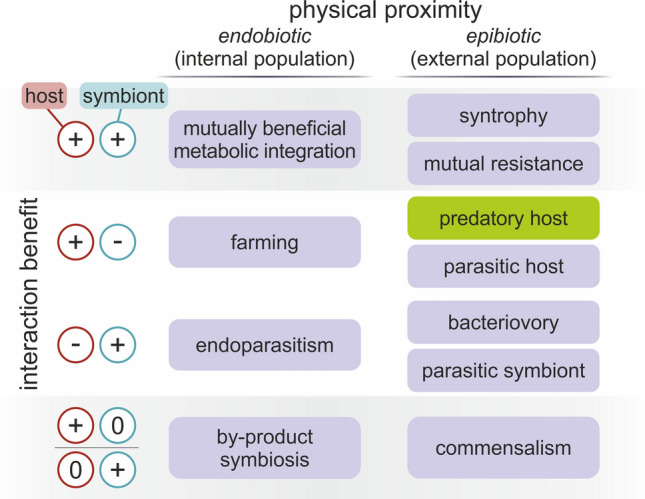Fig. 1.

Prototypical ecological interactions of host and symbiont enabling endosymbiosis, along two orthogonal dimensions: symbiosis (physical contact) and net benefit of the interaction of populations (mutualism). All endobiotic partnerships are technically endosymbiosis. It is trivial that endosymbiosis requires a transition from ecto- to endobiosis, but it is not necessary that the interaction converges to (+|+) . Transition between states is always continuous, rather than stepwise, and boundary states are not separating (i.e., one can go from syntrophy to by-product symbiosis). Mutually beneficial syntrophy, if internalized, could naturally yield metabolic endosymbiosis. Similarly, farming becomes mutually beneficial when the farmed partner survives in an otherwise lethal environment thanks to the host. On the other hand, two steps are needed to turn phagocytosis into mutually beneficial endosymbiosis: first, a mechanism is needed to turn the host to farmer then another mechanism must ensure benefit for both parties. Green box indicates where phagocytosis seems indispensable. We exclude mutually disadvantageous cases (−|−) as those are unlikely to lead to association-level advantages
